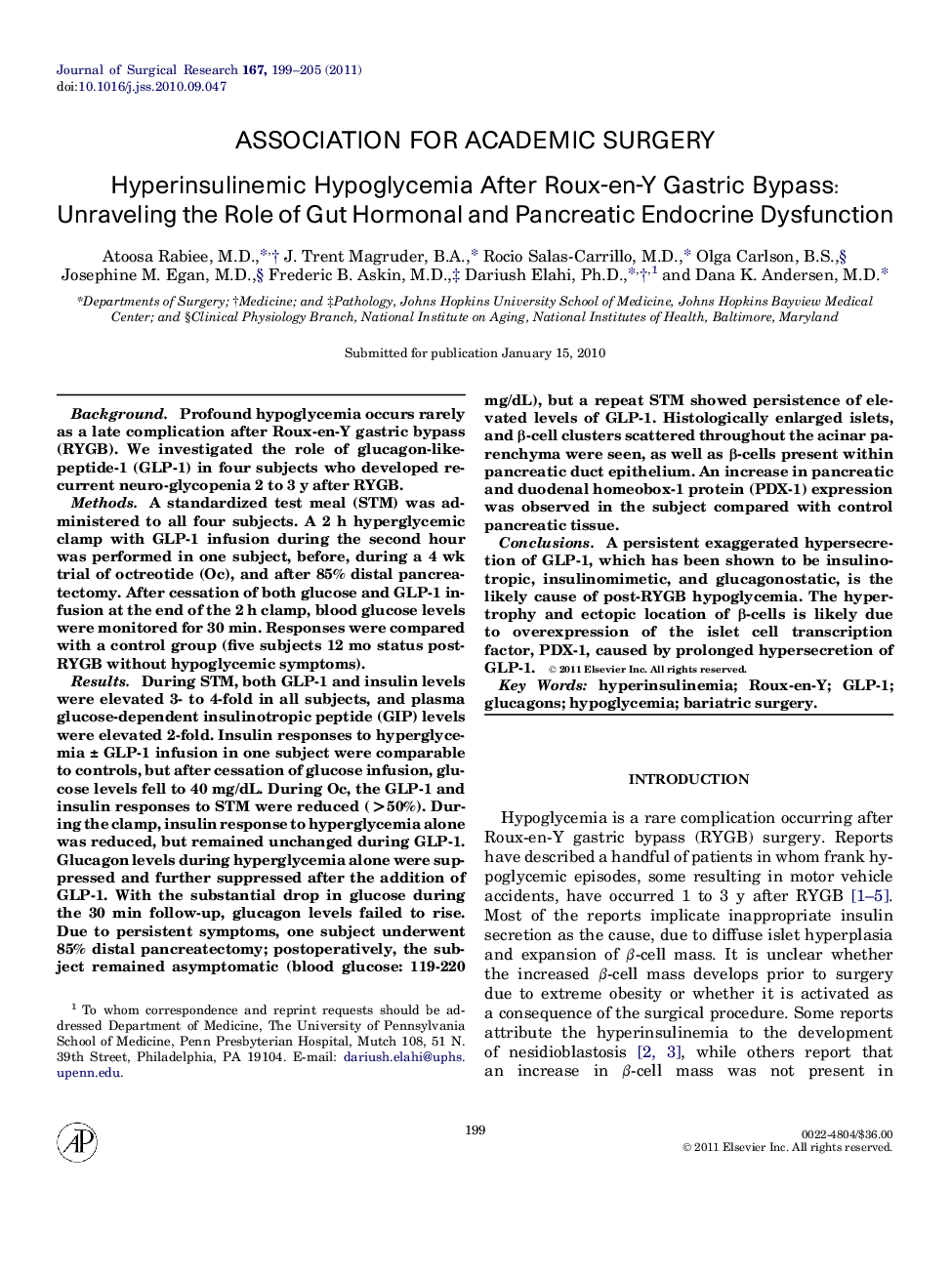| کد مقاله | کد نشریه | سال انتشار | مقاله انگلیسی | نسخه تمام متن |
|---|---|---|---|---|
| 4302508 | 1288458 | 2011 | 7 صفحه PDF | دانلود رایگان |

BackgroundProfound hypoglycemia occurs rarely as a late complication after Roux-en-Y gastric bypass (RYGB). We investigated the role of glucagon-like-peptide-1 (GLP-1) in four subjects who developed recurrent neuro-glycopenia 2 to 3 y after RYGB.MethodsA standardized test meal (STM) was administered to all four subjects. A 2 h hyperglycemic clamp with GLP-1 infusion during the second hour was performed in one subject, before, during a 4 wk trial of octreotide (Oc), and after 85% distal pancreatectomy. After cessation of both glucose and GLP-1 infusion at the end of the 2 h clamp, blood glucose levels were monitored for 30 min. Responses were compared with a control group (five subjects 12 mo status post-RYGB without hypoglycemic symptoms).ResultsDuring STM, both GLP-1 and insulin levels were elevated 3- to 4-fold in all subjects, and plasma glucose-dependent insulinotropic peptide (GIP) levels were elevated 2-fold. Insulin responses to hyperglycemia ± GLP-1 infusion in one subject were comparable to controls, but after cessation of glucose infusion, glucose levels fell to 40 mg/dL. During Oc, the GLP-1 and insulin responses to STM were reduced (>50%). During the clamp, insulin response to hyperglycemia alone was reduced, but remained unchanged during GLP-1. Glucagon levels during hyperglycemia alone were suppressed and further suppressed after the addition of GLP-1. With the substantial drop in glucose during the 30 min follow-up, glucagon levels failed to rise. Due to persistent symptoms, one subject underwent 85% distal pancreatectomy; postoperatively, the subject remained asymptomatic (blood glucose: 119-220 mg/dL), but a repeat STM showed persistence of elevated levels of GLP-1. Histologically enlarged islets, and β-cell clusters scattered throughout the acinar parenchyma were seen, as well as β-cells present within pancreatic duct epithelium. An increase in pancreatic and duodenal homeobox-1 protein (PDX-1) expression was observed in the subject compared with control pancreatic tissue.ConclusionsA persistent exaggerated hypersecretion of GLP-1, which has been shown to be insulinotropic, insulinomimetic, and glucagonostatic, is the likely cause of post-RYGB hypoglycemia. The hypertrophy and ectopic location of β-cells is likely due to overexpression of the islet cell transcription factor, PDX-1, caused by prolonged hypersecretion of GLP-1.
Journal: Journal of Surgical Research - Volume 167, Issue 2, 15 May 2011, Pages 199–205